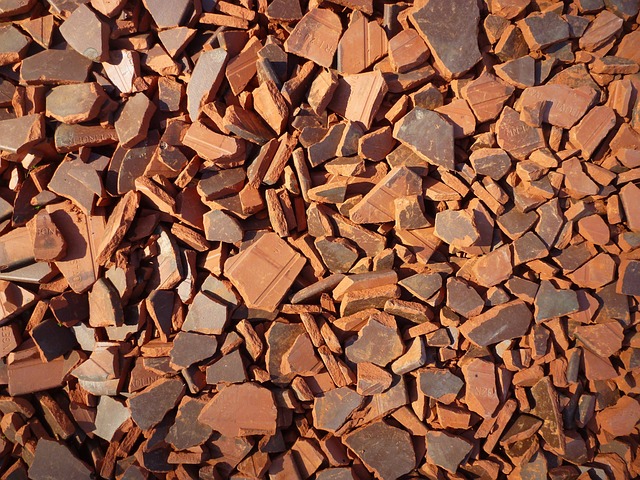For homeowners, the thought of having to deal with old broken bricks can be daunting. Not only are they a pain to remove, but they also tend to create a mess. In this article, we will discuss what to do with broken bricks and remove them without creating a mess. We’ll discuss several available techniques and give you tips on avoiding making a mess in the first place. So whether you’re a homeowner looking to deal with old broken bricks quickly and efficiently, or a professional who needs to clean up after a job, this article has everything you need. Feel free to visit our website for a reliable and powerful mobile mini jaw crusher.
Is it reasonable to use old broken bricks?
Old broken bricks can be a valuable resource for builders. Not only are they free, but they also have a lot of potential to be reused in new projects. Here are four reasons why old broken bricks can be a valuable asset:
- Bricks are reusable because they consist of clay and other materials that can be combined to create new objects.
- Bricks hold up well under the weight of a building, which means that the structure will last longer if made out of them.
- They’re cheap and easy to obtain, so there is no need to waste money on expensive supplies when you can use old bricks instead.
- Broken bricks look unique and exciting, which may attract attention from prospective buyers or clients who might want to use them in their projects.
What to do with a pile of broken bricks: the best ideas for homeowners
If you have a pile of broken bricks, don’t just stand there! Depending on your specific needs, there are plenty of creative and fun ideas for using these unwanted building supplies. Here are some of the best solutions for homeowners:
-Reuse the broken brick pieces to create art projects, such as mosaics or pottery sculptures.
-Use the bricks in landscaping or construction projects, such as creating retaining walls or wall ponds.
-Use broken bricks as foundation stones for garden walls or steps. You’ll need at least four per unit, and they make a sturdy foundation that won’t rot or crumble over time.
-Create an outdoor garden using bricks as soil amendments and plants. Brick gardens look beautiful and add color and texture to any lawn or garden area.
-Brick pavers can create a unique driveway, patio, or walkway. Simply mix mortar with the proper ratio of brick pieces, water, and sand to make your personalized brick paving stones.
-Use the bricks as part of an eco-friendly landscaping project at your home or business premises.
The most creative uses for broken bricks in landscaping
Broken bricks can be used in various ways to improve the appearance of your landscaping. Here are some of the most popular:
- Pathways: Use broken bricks as stepping stones or pads to create a more scenic walkway. You can also use them to form rivers, streams, and other water features.
- Walls: Broken bricks make great border walls or garden beds. They also add character and interest to an area, making it look larger and more inviting.
- Planters: Planting pots directly on top of brick paths is a classic design feature that breaks up the monotony of straight pathways. Add personality by using different colors, shapes, and sizes for your bricks. You can even embed pieces into the ground, so they appear like natural steps leading up to your plants!
- Decorations: Broken bricks make perfect accents for any landscape setting – both indoors and out! Arrange them around gardens, along walkways, or anywhere you want something unique and eye-catching.
Is crushed brick good for drainage?
Crushed brick is a popular material used in landscape and home improvement projects because of its versatility and low cost. It can be used as an infill for flower beds, walkways, or patios; it makes a great base for foundations; and can be used to build walls or fences.
One common question homeowners ask about crushed brick is whether it’s suitable for drainage purposes. The short answer is yes – crushed brick has excellent water absorption properties, making it an ideal material for use in rain gardens, garden slopes, permeable driveways, and more.
In general, crushed brick is a good choice for any area where water will be infiltrating the surface. Its porous structure allows it to absorb water and hold it until it can seep through the cracks or drain away. This makes crushed brick an excellent option for areas such as basements and crawl spaces, where flooding may occur due to heavy rainfall or accidental spills. Additionally, its small size makes it easy to replace if necessary.
Is crushed brick good for the soil?
Crushed brick is a versatile mineral that can be used for various purposes. It can be used as an amendment to the soil to help improve its texture, structure, and fertility, or it can be used as a topping on plants to provide them with essential minerals and nutrients. Additionally, crushed brick has been known to inhibit the growth of weeds and other unwanted vegetation in gardens.
So why is crushed brick good for the soil? The main reason is that it provides both physical (amendment) and chemical (nutrient) benefits to soils. It helps increase their density and water retention capacity while providing essential minerals. In addition, crushed brick retains moisture better than many other soil amendments because it doesn’t absorb water quickly as clays or sand do. This means you won’t have to water your plants as often when using crushed bricks in your garden.
How often should you add crushed brick to your gardening? There is no one-size-fits-all answer to this question, as it will depend on the specific needs of your garden and what type of bricks you are using. Adding crushed brick every three or four months should be enough for most gardens.
